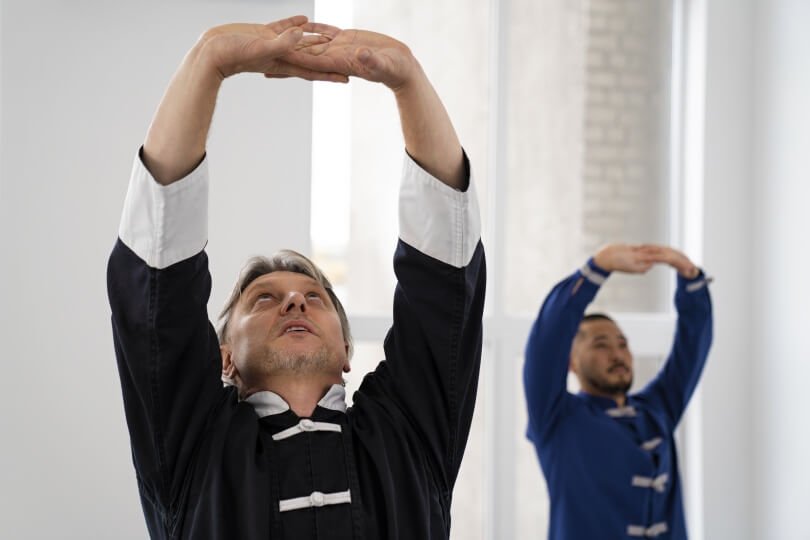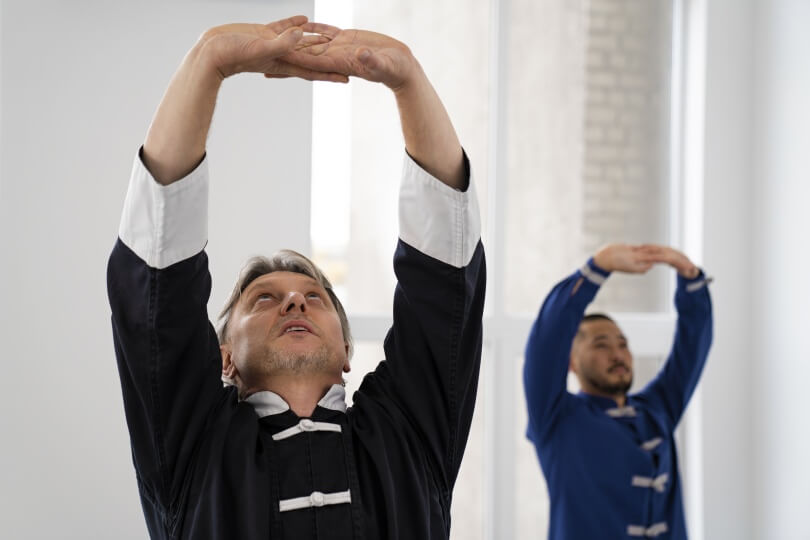Table of Contents
The Interplay Between Memory and Habit in the Subconscious

The Role of Implicit Memory in Automatic Response Development
Understanding Implicit Memory: Definitions and Examples
Implicit memory plays a pivotal role in our daily lives, guiding actions and behaviors without the need for conscious thought. It’s the engine behind the automatic responses and skills we’ve acquired over time, such as riding a bike or typing on a keyboard. This type of memory and habits go hand in hand, as it is our subconscious memory that largely directs our habitual actions.
Consider the last time you drove home from work. You might not recall every turn and stoplight, yet you arrived safely. This is subconscious memory at work, where the memory habit interplay enables us to perform complex tasks with little to no conscious effort – a testament to the profound impact of implicit memory on our routine actions.
The Interplay Between Memory and Habit Formation
When it comes to habit formation memory, the repetition of behavior strengthens neural pathways, making actions more automatic and less reliant on our conscious minds. This memory’s role in habits is evident when new routines become second nature, from brushing our teeth to choosing the same type of coffee every morning. The continuous reinforcement of these actions cements them into our subconscious, showcasing the memory habit interplay.
Take the process of learning a new instrument as a practical example. At first, each note and movement demands our full attention. Yet, with dedication and repetitive practice, muscle memory takes over, and playing becomes more fluid. Here, memory and habits intertwine, allowing for the transformation of deliberate actions into effortless performances.
Connection with Habits: How Repetition Strengthens Neural Pathways
Repetition is the cornerstone of habit formation memory. Each time we perform an action, our brain encodes the sequence of steps, etching it deeper into our subconscious. This solidifying effect highlights the memory’s role in habits, turning occasional behaviors into automatic responses.
The effects of such repetition can be observed in professional athletes. Their extensive and rigorous training schedules are designed to create automaticity in their movements, reducing the need for conscious control. The subconscious mind takes over, allowing for optimized performance driven by habit formation memory.
Ingraining Habits Through Continual Practice
The key to ingraining any habit lies in consistent practice. It’s the regular engagement with a task that activates habit formation memory and embeds it within our subconscious memory. Through the persistent repetition of actions, what was once a conscious effort becomes an unconscious routine, indicating the profound interplay between memory and habits.
As an illustration, consider the daily activity of checking social media. Initially, one might intentionally reach out for the phone to pass time. Over time, however, the action becomes automatic, an ingrained response to certain cues like boredom or notifications – another clear example of memory and habits forming a symbiotic relationship.
In conclusion, the relationship between our subconscious and the habits we form is a potent force in shaping behavior – a force that operates largely outside of our conscious awareness. As a field of study, it demonstrates the remarkable capacity of the human brain to adapt and create efficiencies in our actions, as well as the potential for us to harness this understanding for personal development and growth.
The Impact of Emotional Experiences on Subconscious Learning
Understanding the deep interplay between our emotions and subconscious mind offers intriguing insights into how we learn and form habits. Emotions can significantly impact the imprinting process of memory, which, in turn, directly correlates with our habitual actions. Let’s delve into how crucial the amygdala is in this intricate dance of memory and emotions and how emotional memories can influence our daily behavior, leading to habit formation.
Linking Emotions to Memory: The Role of the Amygdala
When we discuss the connection between memory and habits, the emotional aspect cannot be overlooked. The amygdala, a key brain structure, is pivotal in modulating the strength and formation of memories based on emotional arousal. Memories that have strong emotional connotations – whether fear, joy, or sadness – are usually etched deeper within our subconscious memory. But why does this matter? Because these emotionally charged memories become prime players in the memory habit interplay.
For example, a child who experiences joy while learning to ride a bicycle is likely to remember not only the skill but also the positive emotion associated with it. This pleasant memory can fuel the repetitive act of bicycle riding, turning it into a habit. On the flip side, a traumatic event can lead to aversive habits, with the amygdala playing the dual role of both memory imprinter and emotional intensifier.
Influence on Behavior: Emotional Memories as Triggers for Habits
Emotional experiences often become unconscious triggers that can initiate a cascade of behaviors, laying the foundations for habits. In fact, emotional memories are a significant component of the subconscious mind and habit formation. They can sneakily influence our actions without our conscious awareness. Consider how the smell of a certain perfume can evoke a specific memory and lead to an associated habit formed around that emotional recall. This memory habit interplay is so strong that it can shape our daily routines and even our life choices.
Real-world implications of this emotional memory’s role in habits are evident in consumer behavior, relationship dynamics, and personal development. Marketing experts tap into this science, crafting campaigns that invoke emotional responses to create brand loyalty – a habitual buying pattern. Similarly, repeated exposure to relationship patterns, whether positive or negative, can become ingrained habits, influencing our interaction with new acquaintances or significant others.
In conclusion, emotional experiences are a potent force in shaping our subconscious learning. By understanding the role of the amygdala in linking emotions to memory and the way emotional memories influence our behavior, we can become more aware of our habit formation process. Armed with this understanding, we can potentially harness the power of our memory’s emotional charges to cultivate positive habits and dismantle those that don’t serve us, leading to personal growth and betterment.
Methods for Influencing Subconscious Habit Formation

Utilizing Visualization and Mental Rehearsal to Create Positive Habits
Our subconscious mind plays a tireless role, orchestrating our behaviors and steering our habits, often below the silent threshold of our conscious awareness. Understanding the interplay between memory and habits – a dance between the faculties that anchor us to our past and the tendencies that propel us toward our future – offers invaluable insights into habit formation memory. This can lead to a profound reshaping of one’s life when approached with intent and scientific rigor.
The Framework of Visualization and Habit Formation
Visualization, a technique often lauded by sports psychologists and motivational coaches, begins by tapping into the subconscious memory. By vividly imagining a desired behavior or outcome, you can prime your memory’s role in habits, cementing the foundation for the physical manifestation of those actions. Herein lies the first principle:
- Embedded Experience: The subconscious mind treats a well-visualized experience akin to a real one. This ‘mental rehearsal’ imprints onto the memory, laying the groundwork for automaticity.
- Emotional Intensity: Habits not only form through repetition but also through emotional resonance. Intensifying the emotional content of visualizations anchors habits more deeply into subconscious memory.
- Cues and Triggers: Embedding cues within your visualizations can lead to a sharper memory habit interplay. It’s akin to leaving breadcrumbs for your subconscious to follow when the conscious mind is occupied elsewhere.
Through visualization, not only do we enhance the memory components essential for habit formation, but we also fine-tune the mind to act in ways that align closely with our envisaged goals.
Real-World Impacts: Visualization Success Stories
The abstract principles of visualization manifest most concretely in the success stories of individuals. Here we observe the memory habit interplay in its most dynamic form. Take, for instance, athletes who, through mental training, improved performance by spending a significant part of their training in mental rehearsal, enhancing their muscle memory and reaction times without physical practice. By vividly imagining their races, they have crafted the neural pathways necessary for split-second decision-making during the heat of competition.
Similarly, consider the transformative experience of a former smoker who utilized visualization to form new, healthier habits. By mentally rehearsing scenarios where they rejected the offer of a cigarette and instead reached for a glass of water, the individual was able to create new automatic responses – a testament to the efficacy of visualization in rewiring habit formation memory.
The evidence for visualization’s impact on habit formation is backed by increasing academic research. Studies have indicated that consistent mental rehearsal can lead to actual behavioral change, not merely due to wishful thinking, but as a result of deliberate restructuring of the subconscious mind’s tendency to default to established patterns.
Visualization thus emerges not as a fanciful flight, but as a scientifically-grounded ladder, leading individuals to the heights of their potential by meticulously crafting the subconscious memory canvas upon which the art of habit is painted.
Overcoming Negative Patterns through Cognitive Behavioral Techniques
Understanding the depths of the subconscious mind and its crucial role in forming and maintaining habits can provide profound insights into human behavior and potential for change. The memory and habits we cultivate often influence our day-to-day actions before we even consciously decide on a course of action, highlighting the relevance of the subconscious memory in our lives.
Disrupting the Habit Loop: Identifying Cues and Rewards
A habit loop is a neurological pattern governing any habit. It consists of a cue, a routine, and a reward. To disrupt a negative habit, one must first identify each component of this loop. The cue triggers the behavior, the routine is the behavior itself, and the reward is the benefit that reinforces the habit. For instance, stress may act as a cue leading to the routine of emotional eating, with the temporary relief provided by comfort foods serving as the reward. Memory’s role in habits is apparent here; our subconscious memory recognizes the pattern and automates it.
Alteration of this loop shifts the habit formation memory’s trajectory. Introducing new cues and establishing different routines that lead to a healthy reward can form a new, positive habit. For example, stress can be met with a cue to take a walk, thereby forming a new healthy response.
Real-life applications demonstrate the potential in changing subconscious actions. Consider a smoker seeking to quit. By understanding the memory habit interplay, they can recognize driving factors such as taking a break from work (cue), smoking (routine), and feeling relaxed (reward). Substituting the routine with a healthier behavior, perhaps taking a deep-breathing break, retains the cue and reward while changing the habit itself.
Real-Life Applications: Strategies for Changing Subconscious Actions
The application of cognitive behavioral techniques can significantly affect our ability to understand and change subconscious actions. By reshaping the way we perceive and react to our environment, we leverage the power of the subconscious mind in habit formation memory. Take the example of a person who bites their nails when anxious. They can transform their response by practicing mindfulness when anxiety arises, using a stress ball instead.
Effectively applying these strategies involves consistent monitoring of one’s behavior to identify the subconscious cues and rewards that govern it. Documenting habits in a journal or app can assist in tracking these patterns and creating a tangible record of one’s progress.
In conclusion, careful reflection and application of cognitive behavioral strategies can empower anyone to overcome negative patterns. By delving into the complex interplay of memory and habits, we open paths to lasting change and a better grasp of the influence wielded by our subconscious memory on habit formation.
Summary
The interplay between memory and habit within the subconscious is a fascinating domain that shapes our daily behaviors, often without our consciousness. As we uncover the nuances of memory and habits, we find that our subconscious memory is significantly adept at guiding us through repeated actions, forming a solid bedrock for habit formation memory.
Repetition is the lifeblood of habit formation, emphasizing the profound link between memory’s role in habits and our natural tendency to automate frequent behaviors. Take the case of a morning routine: brushing teeth, having coffee; these activities transform into subconscious actions through the persistent reinforcement of our memory habit interplay.
Understanding the Habit Loop
Habits consist of three main components: cue, routine, and reward. Identifying and altering these can switch a negative habit into a positive one – a testament to the memory habit interplay. Managing this cycle effectively, we can foster healthier habits, whether it’s replacing stress eating with exercise or nail-biting with stress balls.
The subconscious is not only influenced by repetition but also emotional experiences. Emotions leave a vivid imprint on our memory, serving as catalysts for the development and automation of habits. Let’s highlight the role of the amygdala here – it intensifies emotional learning which further fortifies the memory habit interplay, turning casual behaviors into deep-seated habits.
In the realm of self-improvement, visualization emerges as a pivotal player, it intricately links subconscious memory with future actions. Here are key aspects to consider:
- Embedded Experience: Visualization forges neural pathways by imprinting a detailed mental rehearsal into subconscious memory.
- Emotional Intensity: Infusing visualizations with emotions deepens the memorability of the habits we aim to develop.
- Cues and Triggers: Including specific cues in these mental practices can sharpen the recall, enhancing the memory habit interplay.
Such strategies transform visualization from a mere mental exercise into a powerful tool for enacting behavioral change.
Real-life success stories, like athletes improving performance through mental practice or individuals conquering addictions by reimagining responses, underscore the effectiveness of visualization. This is not mere speculation but is backed by research showing that mental practices can reformulate the subconscious proclivities that influence our memory and habits.
In summary, the intricate dance between memory and habit in the subconscious molds our existence. By understanding and manipulating this relationship, we can profoundly influence our daily lives and overall well-being. The potentials of the subconscious memory extend beyond mere habit formation; they offer a means to reshaping our future, by carefully orchestrating the memory’s role in habits today.
FAQ – The Interplay Between Memory and Habit in the Subconscious
How does the subconscious memory influence the reinforcement of daily habits?
The subconscious memory acts as a repository for our repeated actions, gradually automating responses and behaviors into habits without the need for conscious thought, much like how we learn to ride a bike and eventually do it effortlessly. Through continuous reinforcement, such as routinely choosing the same route to work or drinking water first thing in the morning, these actions become imprinted in our subconscious, streamlining our decision-making process and making the habit feel almost second nature.
How does memory stored in the subconscious influence our ability to form new habits?
Memory in our subconscious profoundly shapes habit formation as it retains past experiences and learned behaviors, creating a bedrock from which new habits are built. When we attempt to develop a new habit, our subconscious can either support this process if the habit aligns with ingrained patterns or resist it if it requires significant deviation. Through consistent repetition and positive reinforcement, however, these new behaviors can override old ones, becoming part of our subconscious toolkit.
How does the subconscious memory contribute to reinforcing a new habit?
The subconscious memory plays a pivotal role in habit formation by automating responses and behaviors; as we repeatedly engage in a new activity, our subconscious mind encodes it as a routine, making it progressively automatic and less reliant on conscious thought. This process establishes a form of mental efficiency, as the subconscious starts triggering the habitual action in response to specific cues or contexts, fortifying the habit through repetition without the need for active decision-making each time.




